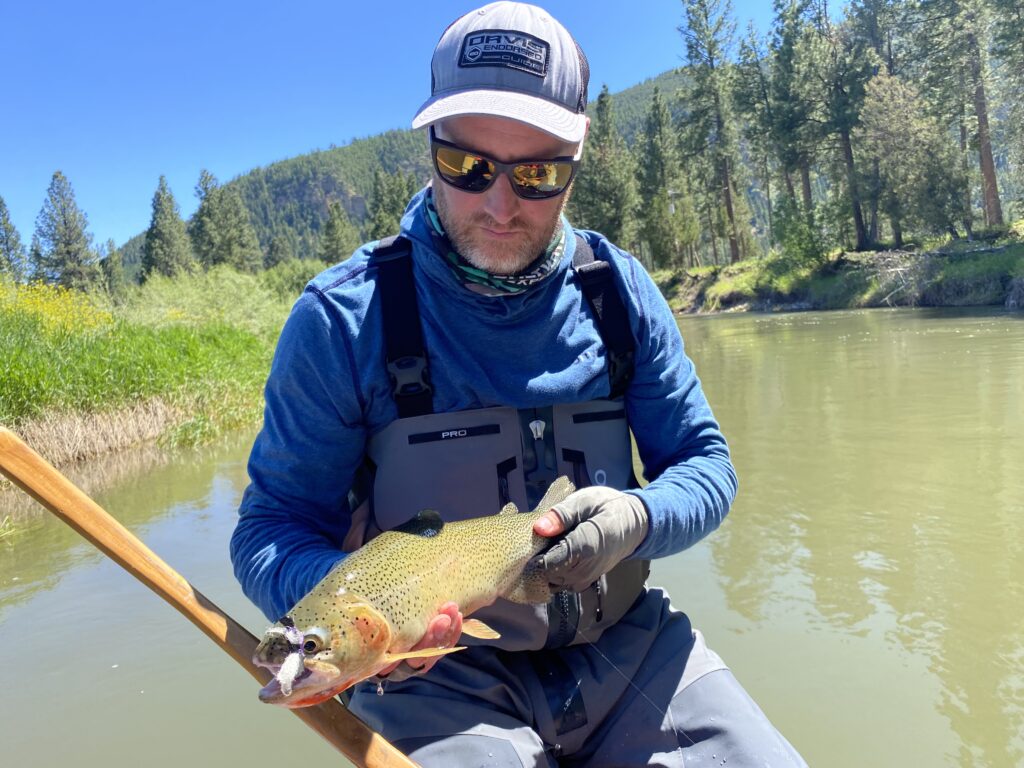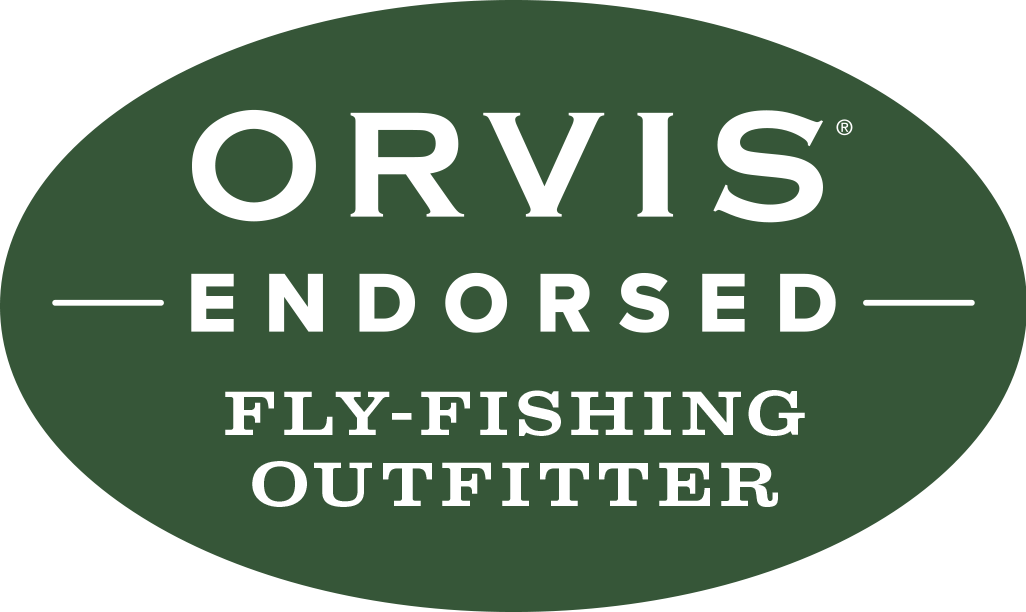Fishing the salmon fly hatch in Montana is an annual event that draws anglers from all over the globe. The Salmon fly is a large stonefly and is of the largest insect hatches in North America. They emerge from or rivers and streams during the late spring and early summer months.
When do Salmon Flies Hatch in Montana
As the water warms up in late spring, the salmon fly nymphs begin to emerge from the river bottom. They crawl up onto rocks and vegetation along the river’s edge. Nymphs then molt into adult form which is a large, winged insect that can measure up to three inches in length.
The emergence of the salmon fly is a critical event for trout. The trout that inhabit the rivers and streams of Montana rely heavily on the salmon fly as a primary food source. The salmon fly hatch is a time of abundance for fish, and they will often feed voraciously. Try to time your fishing to coincide with these hatches to increase your chances of catching fish. Salmon fly hatches usually occur in the early morning or late afternoon.
For anglers, the salmon fly hatch is an opportunity to catch large trout using large dry flies. Dry flies are designed to imitate the adult salmon fly, and they are fished on the surface of the water. As the salmon flies hatch, the trout become increasingly focused on feeding on these insects. This makes them more susceptible to being caught with dry flies like big foam Chubbies.
The Duration of the Salmon Fly Hatch
This hatch typically lasts for several weeks, with peak activity occurring in mid-June. During this time, anglers head to popular rivers with hopes to take advantage. While we have a general idea of the first emergence, the hatches are dependent on a variety of environmental factors. Water temperature, flow, and weather conditions. As you can see from the photo below the water is still very off color from run off but the salmon flys were in full effect.

Best Rivers to fish the Salmon Fly Hatch
One of the most popular rivers for the salmon fly hatch in Montana is the Madison River. The Madison River is a world-renowned trout fishery, and it is home to some of the largest trout in Montana. The hatch will move upstream each day on the Madison. During the salmon fly hatch, the Madison River is teeming with happy fish, and anglers can expect to catch trout on dry flies..
Another popular river for the salmon fly hatch in Montana is the Yellowstone River. The Yellowstone River is the longest undammed river in the United States. It is home to a diverse array of fish species, including rainbow trout, brown trout, and cutthroat trout. During the salmon fly hatch, the Yellowstone River is a prime destination to catch large trout as long as the river running clear.
In addition to the Madison and Yellowstone Rivers, the Blackfoot and the Clark fork in western Montana are known for their great salmon fly hatches. Each of these rivers offers a unique fishing experience, and anglers can expect to catch a variety of fish species during the salmon fly hatch.

Salmon Fly Patterns and Selections
Fly selection during a salmon fly hatch its important to mimic the size, shape, and color of what your seeing on the water. Popular fly patterns for a salmon fly hatch include the Rogue Foam Stonefly, Chubby Chernobyl, Dancin Ricky and the classic Kaufmann Stimulator. Don’t be afraid to twitch or skittering these big bugs as that’s what often triggers the bite.
Fishing the Salmon Fly Hatch in Montana is an annual event that draws anglers from around the world. This hatch is a critical event in the life cycle of many fish species, including trout, and it is an exciting time to be on the water. Please remember to practice responsible fishing practices to ensure the sustainability of the fishery for future generations.


 Methods For Fly Fishing the Missouri
Methods For Fly Fishing the Missouri
Leave a Reply